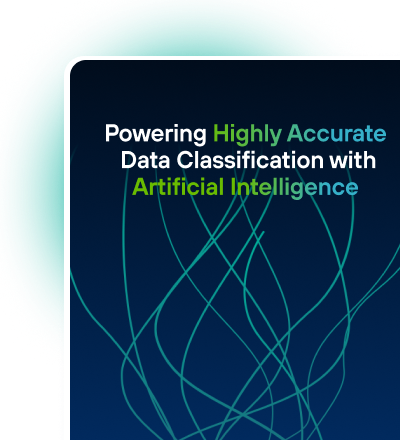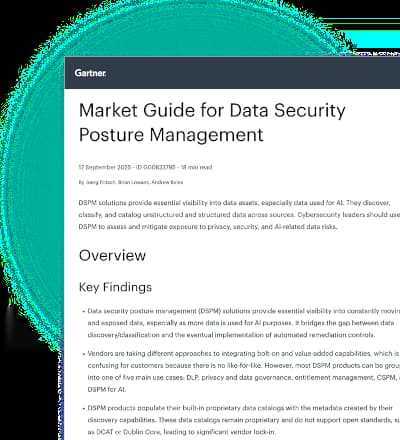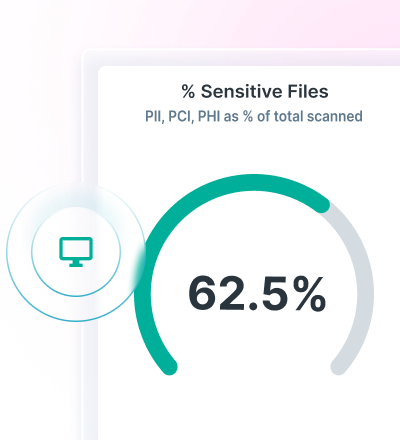Enhancing Security Controls for Cloud Data Access Governance
0 minutos de leitura

Lionel Menchaca
There’s a reason why some analysts expect the cloud security market to nearly triple to over $120B by 2034. Cloud applications have fundamentally changed how organizations store, share and secure data.
What was once protected behind corporate firewalls now lives across countless SaaS apps, collaboration platforms and cloud workloads. This shift delivers speed and scalability but also multiplies risk. Every shared file, exposed bucket and over-privileged identity becomes a potential breach point.
That is why cloud data access governance has become hugely important. It gives organizations visibility to who can access what data, how it is being used and whether that access aligns with corporate policy. The right data access governance controls reduce risk, enforce compliance and build the foundation for trust in the cloud era.
If your organization still treats access management as a static permission problem, it is time to evolve. A strong Data Access Governance (DAG) program brings visibility, control and accountability together to protect sensitive information and reduce risk across the cloud.
Why Cloud Data Access Governance Matters
The perimeter no longer defines security. Cloud data moves constantly between users, apps and devices. Misconfigured permissions, orphaned accounts and third-party integrations can open the door to data loss. According to Gartner, more than 80 percent of data breaches involve identities or permissions that should have been restricted.
Cloud data access governance solves this by unifying visibility and control. It allows organizations to answer three critical questions:
- Who can access sensitive data across cloud and collaboration platforms?
- How are those permissions changing over time?
- Which activities pose unacceptable risk?
Without these insights, data governance teams are flying blind. With AI-powered assistants like Microsoft Copilot and Google Gemini now connected to enterprise data, visibility is more essential than ever.
Core Components of Effective Cloud DAG Controls
Building robust data access governance controls in the cloud requires more than audit logs and access reviews. It demands an integrated approach that spans users, data and applications.
The following Data Access Governance use cases define an effective control framework:
1. Discovery and Classification
Start with visibility. You cannot secure data you cannot see. Cloud DAG solutions should automatically discover data across cloud storage, SaaS platforms and collaboration tools, then classify that data based on sensitivity. DSPM solutions like the AI-native Forcepoint Data Security Posture Management (DSPM) accelerates this step by mapping data locations and risk levels at scale, providing a single source of truth for what matters most.
2. Least-Privilege Access Enforcement
Once sensitive data is identified, you can enforce the principle of least privilege. This means granting users only the access they need and automatically revoking it when it is no longer required. Advanced data access governance controls can detect over-permissioned accounts, external sharing risks and privilege escalation attempts before they lead to exposure.
3. Continuous Monitoring and Response
Cloud environments are dynamic. Permissions, policies and integrations change daily. That is where Forcepoint Data Detection and Response (DDR) comes in. DDR continuously monitors how data is being accessed and shared, correlating behavior with user risk signals. When anomalies appear—such as a user downloading large volumes of files or sharing data to an unsanctioned domain—the system can automatically restrict access or quarantine content in real time.
4. Policy-Driven Automation
Manual audits cannot keep up with the velocity of cloud change. Policy automation ensures governance at scale. With over 1,700 predefined templates aligned to regulations like GDPR, CCPA and HIPAA, policies can automatically adapt as data moves between environments. Forcepoint Data Loss Prevention (DLP) works seamlessly with Forcepoint Cloud Access Security Broker (CASB) ensures enforcement is consistent across endpoints, SaaS and web.
5. Unified Visibility and Analytics
To close the visibility-control gap, organizations need a unified lens. Centralized analytics dashboards show where sensitive data resides, who accesses it and how those exposure trends evolve. Forcepoint Data Security Cloud provides this visibility across hybrid environments, empowering teams to make faster, evidence-based decisions.
Implementing Cloud Data Access Governance Controls
Implementing cloud DAG is not just a technology deployment—it is an organizational shift. Success depends on clear ownership, measurable outcomes and collaboration between IT, security, compliance and business stakeholders.
- Step 1: Define Objectives and Risk Tolerance
Align data governance goals with business priorities. Identify high-value data sets and define acceptable use thresholds. - Step 2: Inventory Cloud Data and Permissions
Use DSPM and CASB tools to map data flows, user roles and external connections. Flag anomalies early. - Step 3: Automate Access Reviews
Replace manual spreadsheet audits with automated entitlement reviews that detect excessive permissions or data oversharing. - Step 4: Integrate with Identity and Access Management (IAM)
IAM ensures that user identities remain verified and traceable. Combine it with DAG controls to enforce policy from login to data access. - Step 5: Continuously Improve Through Analytics
Monitor results and refine policies based on behavioral patterns, compliance findings and new data movement trends.
Organizations that follow these steps can establish adaptive, data-centric security that evolves alongside their cloud footprint.
How Forcepoint Elevates Cloud Data Access Governance
Forcepoint Data Security Cloud platform unites Data Access Governance solutions like DSPM, DDR, DLP and CASB. providing continuous data visibility, adaptive control and unified enforcement across every cloud service.
- DSPM maps and classifies sensitive data across cloud repositories.
- DDR monitors activity and detects risky behaviors in real time.
- DLP enforces protection policies wherever data travels.
- CASB ensures consistent control over SaaS and web applications.
Together, these capabilities close the gap between insight and action. Forcepoint transforms static governance into dynamic protection—allowing organizations to innovate confidently while maintaining control over every byte of sensitive data.
The Future of Cloud Data Governance
As AI, automation and multi-cloud adoption accelerate, data will continue to move faster than traditional controls can track. Cloud DAG solutions must evolve to be context-aware, risk-adaptive and deeply integrated into the business fabric.
Forcepoint is pioneering this shift by delivering self-aware data security—an approach where data security learns and adapts as the organization evolves. With continuous monitoring and risk-based response, it provides a living governance framework that grows smarter over time.
The future of cloud data access governance is not about building higher walls. It is about giving security teams dynamic intelligence and automation to protect what matters, wherever it lives.
Learn more about Forcepoint’s approach to Data Access Governance.

Lionel Menchaca
Leia mais artigos de Lionel MenchacaAs the Content Marketing and Technical Writing Specialist, Lionel leads Forcepoint's blogging efforts. He's responsible for the company's global editorial strategy and is part of a core team responsible for content strategy and execution on behalf of the company.
Before Forcepoint, Lionel founded and ran Dell's blogging and social media efforts for seven years. He has a degree from the University of Texas at Austin in Archaeological Studies.
 How to Strengthen Data Access Governance with Forcepoint DSPMAssistir ao Vídeo
How to Strengthen Data Access Governance with Forcepoint DSPMAssistir ao Vídeo
X-Labs
Receba insights, análises e notícias em sua caixa de entrada

Ao Ponto
Cibersegurança
Um podcast que cobre as últimas tendências e tópicos no mundo da cibersegurança
Ouça Agora








